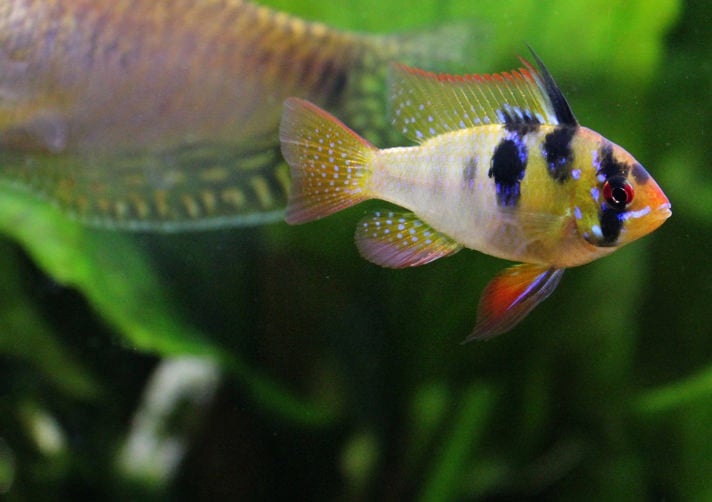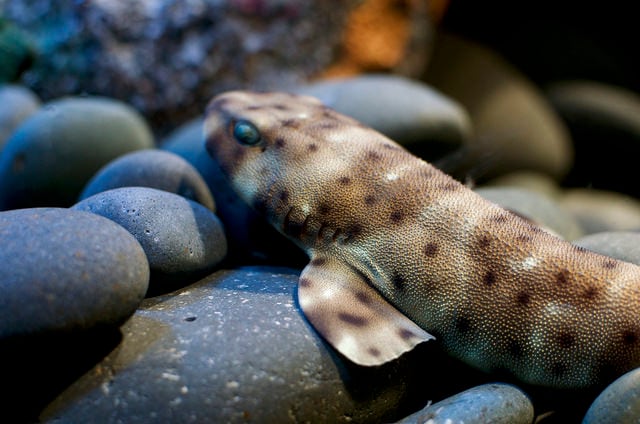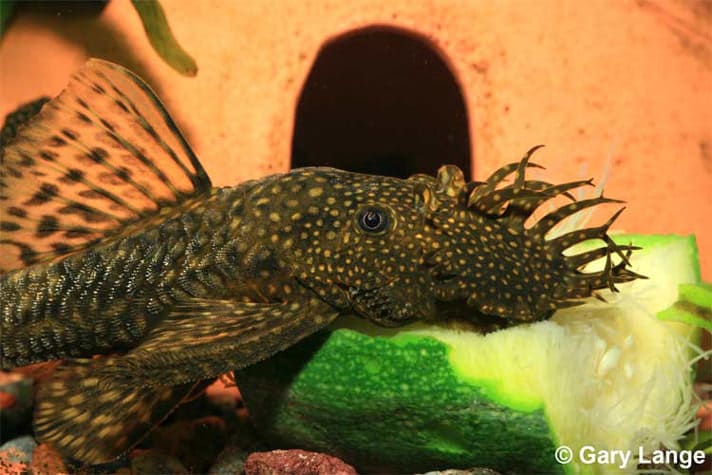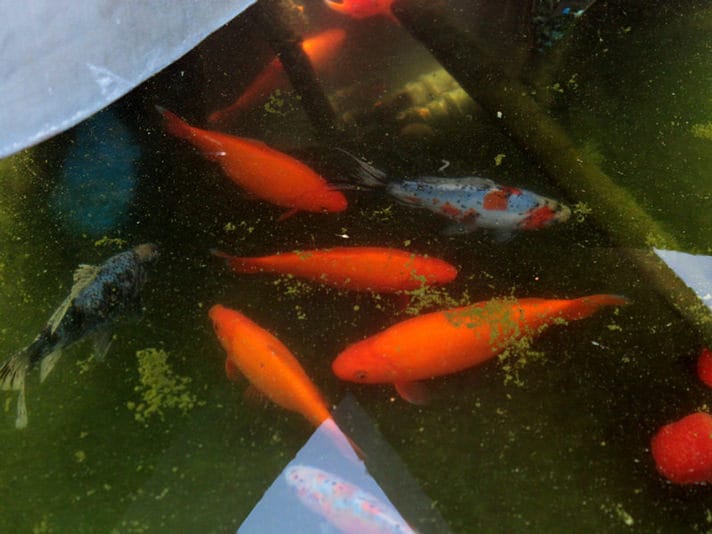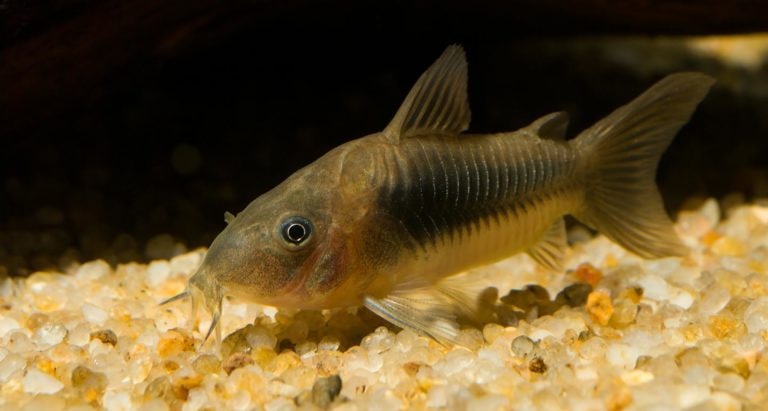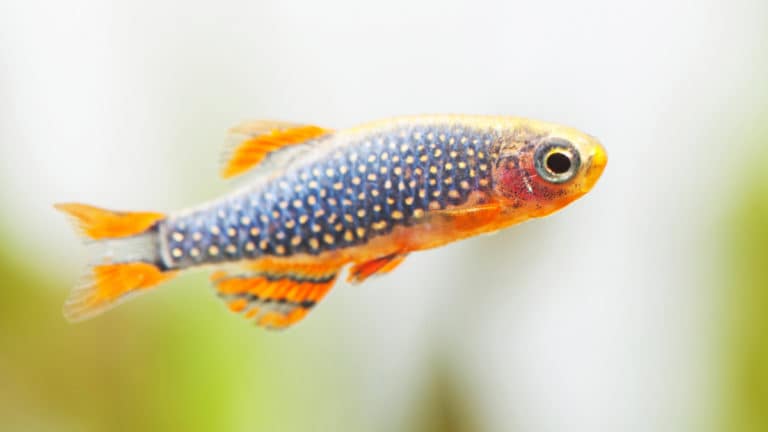Beginner aquarists are sometimes in the dark when it comes to choosing fish. They look at fish at the store and are often unaware that the little sucker mouth catfish with a body of armor can grow to more than a foot in length and live for 20 years. Did you know that those cute orange and white (and black) oscars will get very large and unload lots of poop in the tank? Most beginners don’t.
So what fish should beginner fishkeepers generally avoid altogether?
Here is a rundown of 11 fish that are so popular even the largest retail store in the world sells some of them in its pet section. If you are a beginner, you should generally avoid these fish, at least until you get the hang of keeping fish and maintaining your tank properly. You can set up species specific or specialized tanks when you get your proverbial feet wet in the hobby. These fish are generally not the best beginner fish, and demand and require a bit more of what a community tank can offer. They generally require stringent and specialized water quality requirements, or better filtration, or must be reconsidered due to their aggressive behavior or tank busting physical traits. So, in no particular order, here they are.
Pacu (Colossoma Spp.)
The pacu is often sold as the vegetarian cousin of the piranha. Both belong to the same family of fish, Characidae. The pacu however has one different characteristic, and that is the size of the fish when it reaches maturity. And this is where an unsuspecting beginning fishkeeper gets fooled. Most pacu that you see in your local fish store are just 2 to 3 inches in length with nice coloration. However, these fish will outgrow a 55 gallon tank in their first year and will continue growing, often exceeding 10 pounds in weight. And their colors will fade. Unless you have a nice-sized outdoor pond, avoid this fish, and avoid any local fish store that will sell you one without telling you how big this fish gets.
Red-tailed Shark (Epalzeorhynchos bicolor)
The red-tailed shark is a hugely popular fish in the hobby because of its striking coloration and a body that resembles a shark. It made it to the list not because it is difficult to care for, which it is not for the most part, but due to its highly territorial nature. The red-tailed shark won’t tolerate other red-tailed sharks in the tank or similar species such as the rainbow shark, and I’ve kept certain individuals over the years that have harassed smaller fish in my community tanks, which is often how beginner fishkeepers set up their first tanks. If you do choose to keep this fish, ensure that your tank isn’t populated with timid individuals as they may suffer from this shark.
Plecostomus
Got an algae problem? Get a plecostomus. That is often the solution to many folks’ algae issues, rather than determining what is causing the algae in the first place. The plecostomus is such a popular fish that even the largest discount retailer in the world stocks them for sale in their aquariums. But they are often always small specimens no more than three or four inches in length. Beware this fish. It will grow big. Very big. Most beginners start off with a 20 to 30 gallon fish tank. Adding a plecostomus to such a tank is like housing a killer whale in a swimming pool. The plecostomus can grow to 12 inches and larger. I’ve seen huge specimens (former pets that were released) schooling in Manoa creek on O’ahu, dining on algae). And not to mention, they are gross polluters, meaning, they poop a lot.
Oscar (Astronotus ocellatus)
The oscar is another species that the largest discount retailer stocks in its sparse aquariums and can be purchased at virtually every local pet store and big box pet store. They are always available as juveniles in normal (black and orange) and albino colorations. This fish requires a tank of 50 gallons or more, with 80 to 100 gallons a good size, not a typical beginner tank sized setup. A member of the cichlid family, the oscar will eat virtually any fish that it can fit in its mouth, and because of this, some of those who keep them feed them goldfish and other small fish, even though this is not necessary. For beginners, this fish may be too much to handle. It is large and as such needs a specialized tank for large fish.
African Cichild
African cichlids of the Rift Lakes are in my opinion the most beautiful fish in the freshwater hobby. The problem with them is their aggressiveness. Beginners may not take to their behavior and will certainly be upset when their community tank fish are ripped to shreds by these cichlids. They will certainly kill most any species of fish housed with them, and are often seen fighting with each other as well. Beginning aquarist may like their beauty but they are best left to intermediate and advanced aquarists due to their territorial nature, specialized care, and their need for weekly water changes.
Silver Arowana (Osteoglossum bicirrhosum)
The silver arowana is another fish that is often sold as a juvenile to unsuspecting fishkeepers who have no idea with regard to how big this fish gets. As with the Oscar and other “tank busting” fish, the arowana will eat virtually anything it can fit into its mouth, needs a fairly large and long fish aquarium with the general ideal aquarium being three times the length (it can grow to 3 feet in length) of the arowana. While they are cute when small, the arowana grows into a monster fish with a massive appetite and bioload to boot.
Bala Shark (Balantiocheilus melanopterus)
Another popular fish due to its shark-like look, the bala shark is actually a member of the Cyprinidae family and is closely related to carps and true minnows. The bala shark can grow to 12 inches in length or more, again too big for those new to fishkeeping and too big for your average community aquarium. Other than its large adult size, the bala shark is generally a very peaceful fish that does best in groups of six or more.
Discus (Symphysodon aequifasciatus, S. heckel and S. haraldi)
As with the African cichlids, the discus is on most aquarists list as one of the most beautiful fish in the hobby, freshwater or saltwater. A very peaceful fish with a calm demeanor, the discus requires more specialized care than most other beginner community fish. It requires very specific water parameters, a large tall tank with plenty of live floating and rooted plants, and a strict partial water change schedule. Because of these requirements, discus fish are best left to intermediate and advanced aquarium fishkeepers.
Glass Catfish (Kryptopterus bicirrhis)
Glass catfish are very interesting and cool fish to look at as their bodies are transparent and completely see-through. Found in virtually every fish store and big box pet store, most glass catfish are wild caught. They are very susceptible to bacterial infections. The glass cat is a shoaling fish and should be kept in groups of at least six. Anything less and they are prone to perish in a community tank.
Otocinclus (Otocinclus sp.)
Otocinclus are a delicate sucker mouth catfish species that requires absolutely pristine and well agitated water to mimic their habitat in the wild. This fish is also primarily wild caught and as such are more challenging to keep than captive bred fish, though they can be kept successfully. The otocinclus requires a densely planted tank with plenty of live plants, rocks and a fine substrate. This herbivorous fish requires a supplement of raw leafy vegetables such as romaine lettuce, zucchini and peas to add to the algae tablets that most people who keep these fish feed them. If you can provide excellent water quality and supplement their food with vegetable matter, you can be successful with this fish.
Koi (Cyprinus carpio)
Koi are often seen in water gardens and backyard ponds because you guessed it, that is where they will flourish, not a fish tank. The koi is basically a beautiful carp that can grow to several pounds and up to 2 feet in length. They require 100 to 200 gallons of water per adult fish, way more than most aquariums can provide, let alone aquariums for beginners. It made it to the list because they are often seen at your local fish store and big box store for sale in fish tanks and people assume that is where they can be housed when they take them home.
Posted By: Chewy Editorial
Featured Image: Via saavedramarcelo/Thinkstock
Share:


